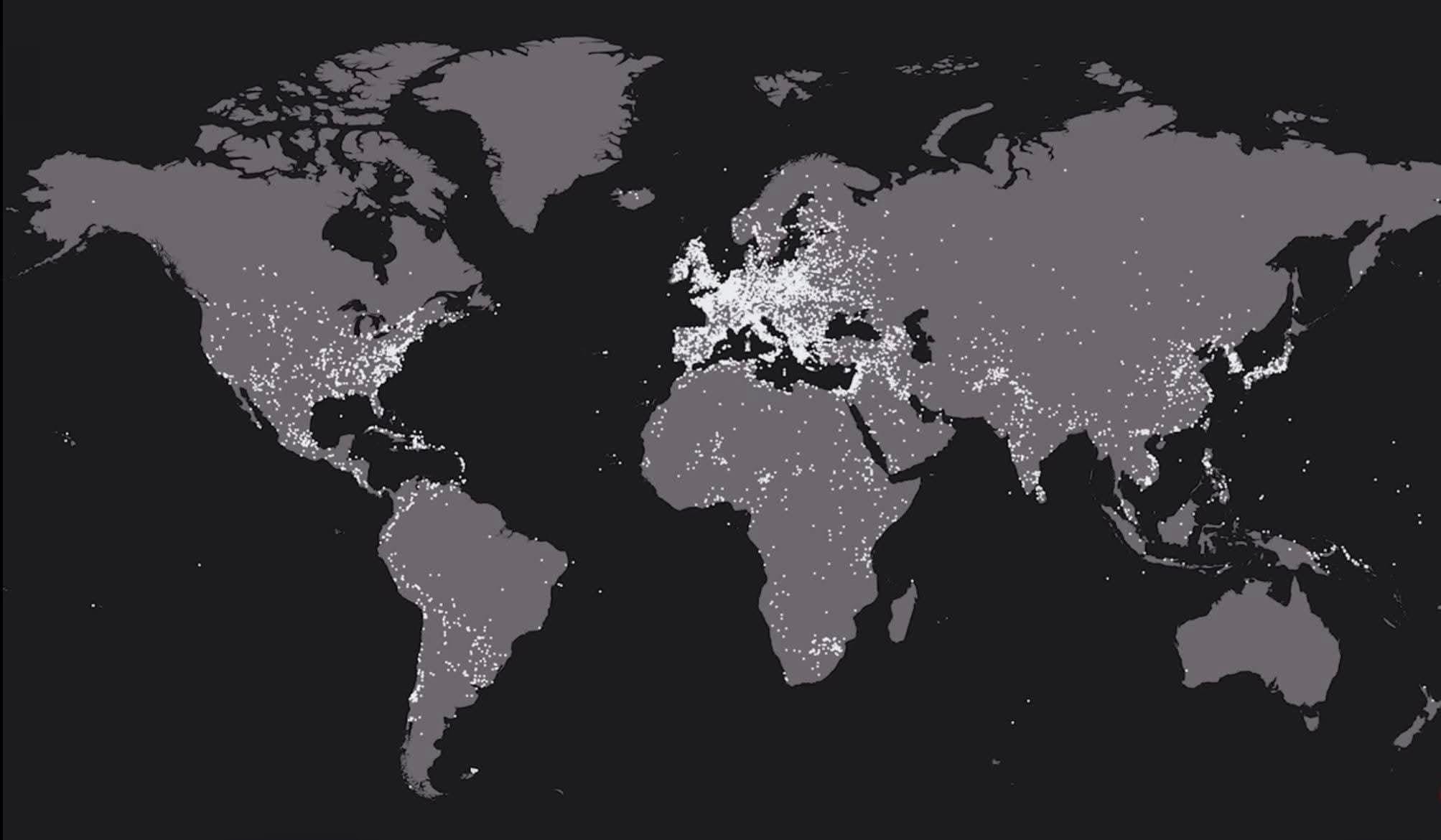Map of Every Recorded Battle Since 2500 BC


David Chen
Data Visualization Specialist
David Chen is an expert in transforming complex geographic datasets into compelling visual narratives. He combines his background in computer science ...
Geographic Analysis
What This Map Shows
This visualization lays out every recorded battle since 2500 BC, marking a timeline of human conflict across various regions of the globe. Each dot and line on the map represents a battle, providing a graphical representation of where these conflicts occurred and their historical significance. It’s a powerful reminder of how geography has influenced warfare and vice versa. Now, let’s delve deeper into the profound impact warfare has had across civilizations and time.
Deep Dive into the History of Warfare
Warfare is as old as civilization itself, with the earliest known battles dating back to ancient Mesopotamia. The reasons for conflict have varied throughout history, ranging from territorial disputes and resource competition to ideological and religious differences. Interestingly, the geographical context of these battles often shaped their outcomes. For instance, mountainous regions have frequently served as natural barriers, influencing strategies and tactics employed by both attackers and defenders.
Have you ever wondered why certain regions are historically more conflict-prone? Geography plays a crucial role. Areas with abundant resources, such as fertile land or mineral wealth, tend to attract conflicts, as seen in the ancient city-states of Mesopotamia, where control over the Tigris and Euphrates rivers was essential for agriculture and trade. On the other hand, regions like the Himalayas, while difficult to traverse, have seen their share of battles, often due to the strategic advantage they provide.
What’s fascinating is how the map demonstrates the evolution of warfare technology and strategy over millennia. From the chariots of ancient Egypt to the gunpowder empires of the Middle Ages, and now to modern mechanized warfare, the nature of conflict has shifted dramatically. Each battle represented on the map not only marks a geographical point but also highlights a moment in technological advancement and societal change.
Furthermore, the map reveals patterns in the geopolitical landscape. For example, the historical conflicts in Europe, particularly during the World Wars, reflect the continent's complex alliances and animosities shaped by centuries of territorial disputes. Similarly, the battles in the Middle East illustrate the ongoing struggles for power and influence in a region rich in history and resources.
Regional Analysis
Breaking down the map by region, we see distinct clusters of battles that tell unique stories. In Europe, for instance, battles such as the Battle of Hastings in 1066 and the numerous conflicts during the Hundred Years’ War demonstrate how geography influenced not just military strategy but also the political landscape of nations. The proximity of nations and the rivalry for dominance led to a series of conflicts that reshaped Europe.
In Asia, the map highlights significant battles such as the Mongol invasions, which expanded across vast territories, showcasing the mobility of their cavalry and strategic use of geography. The dense forests and mountains of Southeast Asia have also been pivotal in shaping local conflicts, with guerrilla tactics often employed in the terrain.
In Africa, the map shows how colonialism brought about a different kind of warfare. The Scramble for Africa in the late 19th century resulted in numerous battles as European powers vied for control over the continent’s resources. Interestingly, many of these conflicts have continued to have repercussions that resonate today, as many nations struggle with the borders drawn during colonial times, leading to ongoing ethnic and territorial disputes.
Significance and Impact
Understanding the geographical context of warfare is essential for comprehending many of today’s global conflicts. The history of battles depicted on this map highlights how territorial disputes can lead to prolonged conflicts, affecting millions of lives. Additionally, the consequences of these battles often extend far beyond the battlefield, influencing migration patterns, economic development, and political relationships.
As we look towards the future, the significance of this map becomes even clearer. Current trends show that many conflicts are still deeply rooted in historical grievances tied to geography. Climate change and resource scarcity are emerging as new catalysts for conflict, as nations and communities compete for dwindling resources. Thus, this map serves as a vital tool for understanding not just the past, but also the potential future of global conflicts. By examining the historical battles and their geographical contexts, we can better prepare for and hopefully mitigate future conflicts.
In conclusion, the map of every recorded battle since 2500 BC is not just a collection of dots on a geographic canvas; it is a comprehensive narrative of human conflict, shaped by the land on which it unfolds. Each battle tells a story of ambition, survival, and the relentless pursuit of power, reminding us of the integral relationship between geography and the history of warfare.
Visualization Details
- Published
- October 19, 2025
- Views
- 32
Comments
Loading comments...